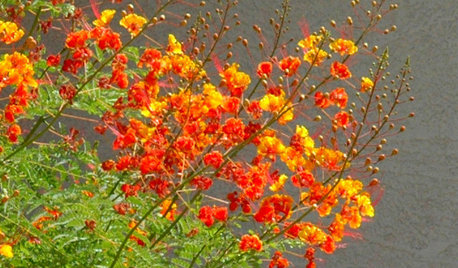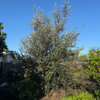Red Palm Weevil
gargwarb
13 years ago
Related Stories

LANDSCAPE DESIGNCelebrate a Sunny Climate With the Right Leafy Palm for Your Site
So you get freezes or floods. So your garden is small. These palms send excuses riding off into the tropical sunset
Full Story
EVENTSWhat to See and Do During Modernism Week in Palm Springs
Get your midcentury modern fix with a side of Palm Springs sunshine. This guide will steer you to the noteworthy events
Full Story
HOUZZ TOURSRare Modernist Home Uncovered in Palm Springs
A custom home by modernist William Krisel gets restored and updated
Full Story
COLORColor Me Dazzled: The Saguaro Hotel in Palm Springs
No dusty neutrals for this desert hideaway — The Saguaro hotel revels in electrifying color from every arc of the rainbow
Full Story
MODERN HOMESHouzz Tour: A Palm Springs Midcentury Home With Central American Flair
A couple’s desert oasis home takes its style cues and color inspiration from Guatemala
Full Story
REDRed Doors Spice Up Home Fronts
Quaint or contemporary, a red door can be a key ingredient in creating a warm, welcoming entry to your home
Full Story
GARDENING FOR BUTTERFLIESGreat Design Plant: Red Bird-of-Paradise Soars With Color
Fiery bursts of red-orange flowers bring hot summer gardens to life, while this shrub's drought tolerance keeps the living easy
Full Story
HOLIDAYS15 Spectacular Christmas Palettes Beyond Red and Green
Instead of dragging out holiday decorations in the same old expected colors this year, dare to consider these gorgeous alternatives
Full Story
KITCHEN STYLESKitchen Workbook: 12 Elements of Tropical-Style Kitchens
Relax into that vacation-at-home feeling with a kitchen that evokes swaying palm trees and warm ocean breezes
Full Story
HOUSEPLANTSOne Pot, One Big Shot of the Tropics
Give your rooms exotic flair in a single stroke. Tall Kentia palm fits the tropical bill beautifully
Full Story






bahia
gargwarbOriginal Author
Related Professionals
Arnold Landscape Architects & Landscape Designers · Ballenger Creek Landscape Architects & Landscape Designers · Allentown Landscape Contractors · College Park Landscape Contractors · Desert Hot Springs Landscape Contractors · Hendersonville Landscape Contractors · Royal Oak Landscape Contractors · Markham Landscape Contractors · Dickinson Swimming Pool Builders · Jacksonville Window Contractors · Berkeley Window Contractors · Eagle River Window Contractors · Kearns Window Contractors · Tamalpais-Homestead Valley Window Contractors · Linthicum Window Contractorsjlgship_gamil_com